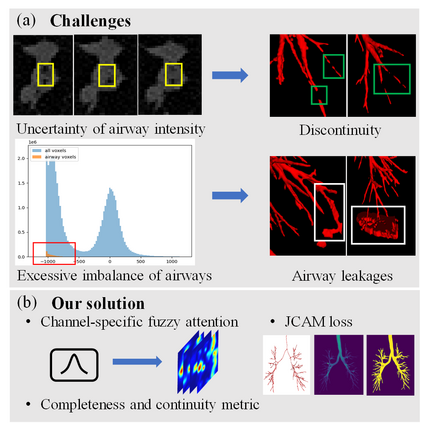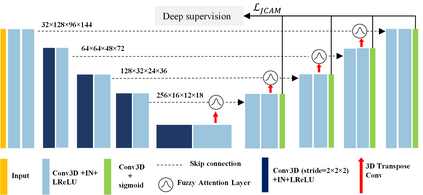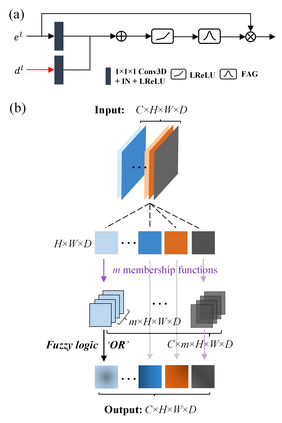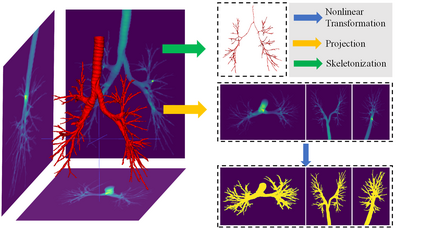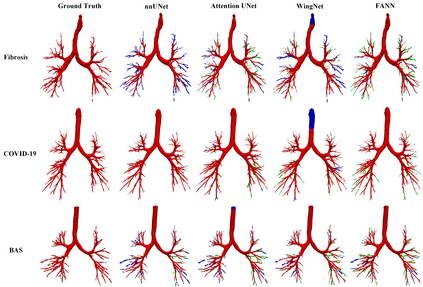Airway segmentation is crucial for the examination, diagnosis, and prognosis of lung diseases, while its manual delineation is unduly burdensome. To alleviate this time-consuming and potentially subjective manual procedure, researchers have proposed methods to automatically segment airways from computerized tomography (CT) images. However, some small-sized airway branches (e.g., bronchus and terminal bronchioles) significantly aggravate the difficulty of automatic segmentation by machine learning models. In particular, the variance of voxel values and the severe data imbalance in airway branches make the computational module prone to discontinuous and false-negative predictions. especially for cohorts with different lung diseases. Attention mechanism has shown the capacity to segment complex structures, while fuzzy logic can reduce the uncertainty in feature representations. Therefore, the integration of deep attention networks and fuzzy theory, given by the fuzzy attention layer, should be an escalated solution for better generalization and robustness. This paper presents an efficient method for airway segmentation, comprising a novel fuzzy attention neural network and a comprehensive loss function to enhance the spatial continuity of airway segmentation. The deep fuzzy set is formulated by a set of voxels in the feature map and a learnable Gaussian membership function. Different from the existing attention mechanism, the proposed channel-specific fuzzy attention addresses the issue of heterogeneous features in different channels. Furthermore, a novel evaluation metric is proposed to assess both the continuity and completeness of airway structures. The efficiency, generalization and robustness of the proposed method have been proved by training on normal lung disease while testing on datasets of lung cancer, COVID-19 and pulmonary fibrosis.
翻译:对肺病的检查、诊断和预测而言,对气管断裂至关重要,而人工划分则过于繁琐。为了减轻这种耗时和可能具有主观性的人工程序,研究人员提议了一些方法,从计算机断层图像中自动分割气道;然而,一些小型的气管支流(例如支气管和终端支气管)大大加剧了机器学习模型的自动分离困难。特别是,毒理值的差异和空气管分支数据严重失衡使计算模块容易发生不连续和错误的循环预测,特别是对于肺部疾病组群而言。关注机制已经显示了分层复杂结构的能力,而模糊逻辑可以减少特征表达的不确定性。因此,由模糊的注意层层提供的深度关注网络和模糊理论的整合,应该成为更普遍化和稳健的解决方案。 本文提出了一种高效的空气分解方法,包括新的透析神经网络和全面损失功能,可以增强肺部的循环循环结构,同时通过深度的空气分解和透析系统的现有数据功能,通过深度的测测测测算和测算系统,可以测算和测算现有磁道分解的分解系统。

